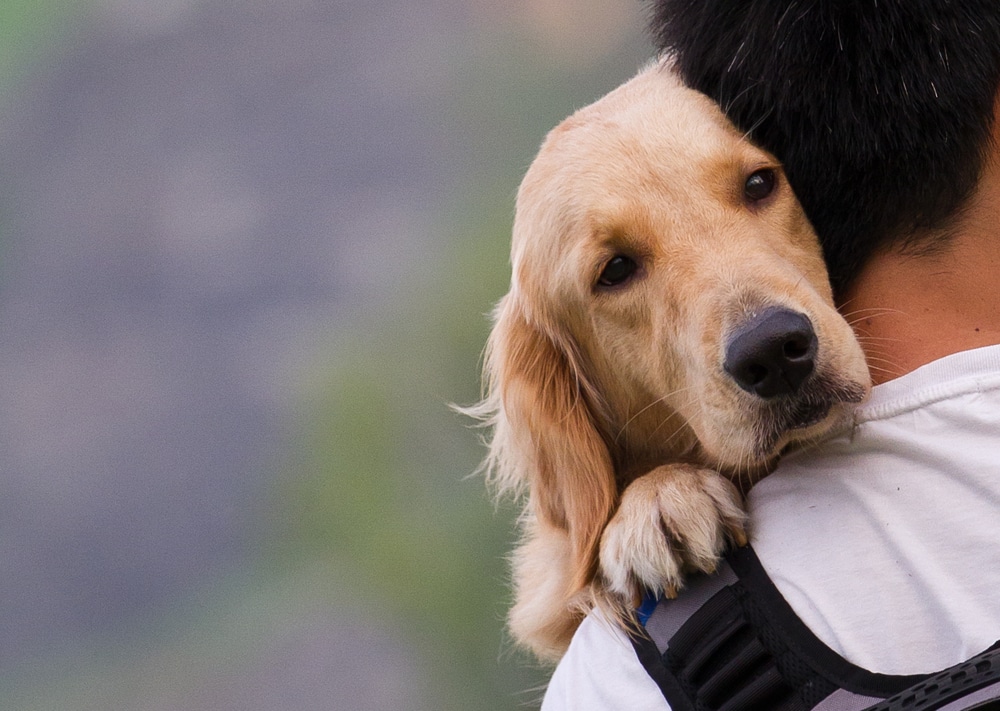In addition to the importance of health concerns for our dogs, it’s also very important to understand what they are feeling and why. Obviously, we can’t speak to them, so we need to know their body language, why they react in certain ways, and how to make them feel secure around us in any situation. So, when it comes to, “How can I tell what my dog is feeling?” what can you do?
We can understand what dogs are feeling by learning their body language and vocalizations. This means carefully observing every detail of their behavior and movement. This means watching how they move, how they vocalize, how they see us and other things, and any typical movement of the body or tail. Every dog is a little unique, so sometimes you’ll just need to give it time to see how they react to certain situations and feelings.
Table of Contents
What Are The Benefits Of Being Able To Tell What My Dog Is Feeling?
Understanding your dog’s body language means a stronger bond with your dog. It means better knowing what they need, when they need it, and how they need it.
It also means your dog feels safer and more loved by you. They’ll have a better life because they’ll be getting more of what they want and need.
Do Dogs Experience The Same Feelings As Us?

Dogs experience everything we feel, including happiness, sadness, pain, disappointment, fear, excitement, anger, and more. The main difference between what humans and dogs feel is dogs can’t express their feelings the same way as us. They can show it in their body language, in their vocalizations, but they can’t talk, leaving us to figure out the specific details or what they’re feeling and why.
How Can I Tell What My Dog Is Feeling?
Even though dogs can’t talk, they express their feelings well through their body language and vocalizations. So, let’s dive into how you can understand the different feelings of your dog.
Happiness/Excitement
Thankfully, it’s not really difficult to understand when your dog is in a happy or excited mood. Here are some things to look for:
- A quick bark – Dogs bark a lot. It’s just a part of what makes them dogs. But sometimes a dog will give a quick bark as a way to signal it’s happy or excited.
- Wagging its tail – This is the easiest way to tell if your dog is excited or happy. If a dog is wagging its tail, then you’re doing well as an owner.
- Jumping or speeding around – You’ll see these behaviors when a dog is excited. Maybe you just came home, they’re playing, or are excited about food. They might show these things by jumping or speeding around.
- Panting – Although a dog doesn’t pant as a result of being happy, it’s no secret that a tired dog is a happy dog. When dogs have played or exercised, they’ll pant, which is a good sign they’re feeling pretty good.
Wanting Something
Dogs like plenty of things. They like food, treats, toys, attention, walks, and more. So, how do you know when your dog wants something? Check out the list below:
- Looking right at it – Dogs don’t try to hide what they want. If they want something, they’ll look right at it.
- Circling around it – This doesn’t always happen, but if a dog is circling around something, there’s a good chance they’re interested in it.
- Pawing at it – This is a clear sign a dog wants something. If they’re pawing at you, they want attention. If they’re pawing at an item, they want that item.
Fear
Dogs get scared. We don’t want it to happen, but it can. There’s a lot in our world they don’t understand, so some of those things frighten them. Here’s what to look for:
- Can’t settle down – A dog that keeps moving around and making sounds or barking might be nervous about something.
- Shaking – Sometimes, when dogs are scared, they shake. This is their response to such an extreme emotion.
- Growling – Sometimes growling shows aggression, and sometimes it shows fear. A growling dog may be trying to scare something away it’s afraid of.
- Whimpering – If a dog is whimpering, it can mean a few things, and one of those things is fear.
Sadness
Hopefully, your dog is never sad. That’s the last thing we want for our pups! It’s still important to know these signs though. So, here’s what to look for:
- Lack of energy – Although a lack of energy could also be a sign of illness or some other issue, it could also mean your dog is sad. When they would normally be playing or coming to see what you’re doing, you may find them laying around a lot more.
- Not eating – This could also be a sign of many other things, but dogs love to eat. So, if they’re not eating normally, it could be a sign they’re sad.
- Withdrawing – If your dog is keeping itself tucked away somewhere, this could be a sign they’re sad. Dogs are social creatures and like to be with us, so if your dog is spending more and more time away from you, it could be a sign something is wrong.
Curiosity
Dogs love to be curious about things! This gets them in trouble, but it’s also adorable. So, what should you look for? Here are some things:
- Sniffing – Dogs love sniffing things. It’s how they figure things out and how they remember things. It’s how they remember you! If a dog is sniffing something, it’s because they want to know what it is.
- Exploring – This often goes along with a dog sniffing, but if they catch a scent that piques their interest, they’ll follow it until they can’t anymore.
- Ears up – If a dog’s ears are up, it’s because it’s trying to listen better to something it’s curious about.
Pain
Although it’s difficult to think about, dogs do feel pain just as we do. They can get hurt in a lot of ways, so being able to recognize when they’re in pain is an important step in keeping them healthy and well. Here’s what to look for:
- Limping – If a dog is limping, something is causing them pain. We recommend contacting your vet as soon as possible
- Whimpering – If a dog is whimpering, it could mean something is causing them pain.
- Favoring some paws over others – If a dog won’t put pressure on one or more paws, something is wrong with the paws they won’t put pressure on.
- Opening and closing one eye – This motion is similar to when we wince. If a dog is doing this, there may be something wrong.
- Licking an area of their body over and over – This could be your dog’s attempt to clean a wound or relieve something that’s bothering them. If you notice anything, contact your vet.
Anger/Aggression
Dogs that are angry/aggressive are quite scary. Here’s what to look for when a dog is angry:
- Bared teeth and snarling – Dogs will reveal their teeth and start to snarl and growl. This is a huge sign that lets you know your dog is angry or feeling aggressive about something.
- Ears back – This is another well-known sign of anger or aggression in dogs. Their ears will go back or flatten against their heads.
- Excessive barking – A dog that wants to scare someone or something off or to alert its owner to a problem will bark a lot.
- Getting low to the ground – This can happen when they’re ready to play too, but if you see a dog lowering to the ground along with other behaviors in this list, it’s likely due to aggression.
- Not obeying – An angry or aggressive dog will sometimes not obey their owners. This isn’t usually the case, especially if the dog has been trained well, but it can happen in extreme situations.
What Should I Do About What My Dog Is Feeling?
What you do with how your dog is feeling depends on your dog and what they’re feeling. Our first recommendation is to get with your veterinarian to get some tips. You could also work with a behavior specialist if you feel that’s needed.
In general, though, you’ll want to treat the feeling like you would if a human were feeling it. For example, if your dog is happy, keep doing what’s making them happy. If your dog is scared, take appropriate steps to calm them down and make them feel safe again. These could be things like gently talking to them, petting them, or removing whatever it is that’s making them scared.
If your dog is sad, spending more time with them will help. If your dog is hurt, providing them with care is essential. The list goes on and on, but, thankfully, in most cases, responding to a dog’s feelings is pretty straightforward.
In Conclusion: How Can I Tell What My Dog Is Feeling?
So, the good news is when it comes to, “How can I tell what my dog is feeling?” dogs’ feelings aren’t complicated and are easily responded to. We hope your bond with your dog grows as a result of this article.
What about you though? Have you found any other strategies that work with dogs and their feelings? Let us know in the comments below!
